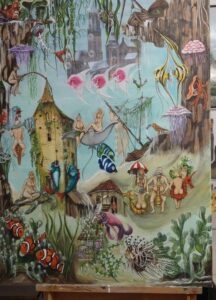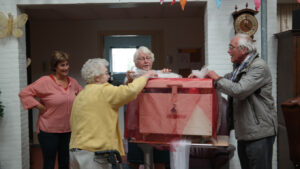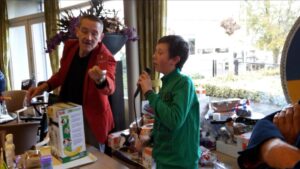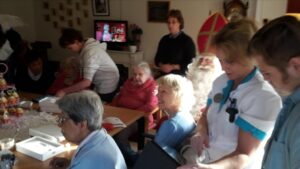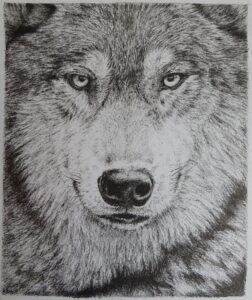‘Did you know that in the past in Geldermalsen not all streets had a name? You knew who lived where by the numbers on the houses. And that there were three districts? ’t Rot, Centrum and Meteren?’
At the end of April, Nelis van Ooijen of the Historical Society West Betuwe (HKWB) gave a presentation of old photos to residents of the Ravestein care centre in Geldermalsen. For those residents, the presentation by Van Ooijen provided a lot of recognition and also visibly a lot of entertainment. Van Ooijen started the afternoon with photos of the family and the place where he grew up. After all, in the West Betuwe the first question is ‘Whose family are you?’ The origin then became clear. Using photos of old and well-known buildings from Geldermalsen and the surrounding area, Van Ooijen explained what daily life was like in the 1950s and 1960s. For example, photos were shown of the Beurs, Wijk en Visser, the Ster, and of the Boerenbond with the grain silo. An image was also shown of the Chamotte Unie, where many residents earned their living at the time. Many of those present still remembered the whistle that went off when employees had to get back to work after their break. The train that drove from the Chamotte Unie site via the Tielerweg and the Lingeweg to the unloading quay also led to recognition. A photo of the Van Wijk family reminded of the Van Wijk and Visser factory that also provided many residents with work at that time. Photos of important buildings such as the district court, later the police station, the Carabain hotel and the old drawbridge were also on display. There were many signs of recognition. At one photo, one of the residents even shouted: ‘But that’s my mother!’ All in all, there was plenty to talk about. Such as a photo with many people at the harvest in a cherry orchard. Or the photo of a family around a spinning wheel. Or about that of a pig that was kept behind the house for slaughter. The meat was then salted. Later it was pickled and still later it was frozen and stored in the freezer on the Willem de Zwijgerweg.
We can look back on a successful afternoon. The HKWB will therefore provide more presentations. Both for the residents of Ravestein and other interested parties. The HKWB project is supported by the foundation Vrienden van Ravestein.


